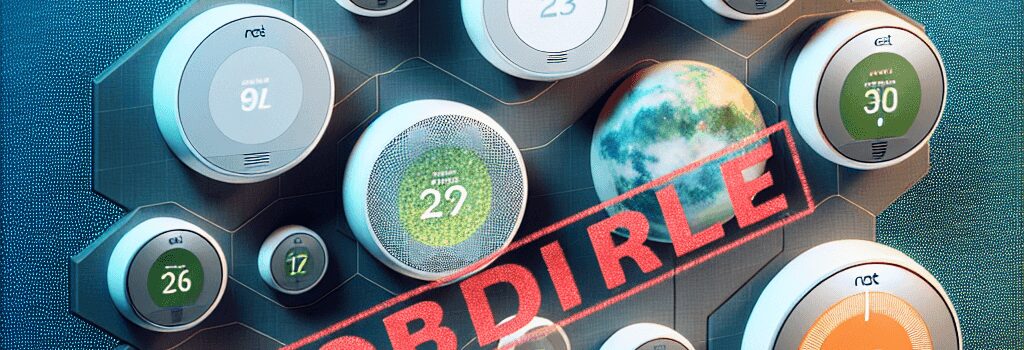Google Ends Cloud Support for 1st & 2nd Gen Nest Thermostats in 2025

Google has confirmed that the original Nest Learning Thermostat and its second-generation successor will cease cloud connectivity and software updates on October 25, 2025. While these devices will continue to modulate HVAC equipment locally, all smart features—remote control, learning algorithms, energy reports and voice commands—will be disabled when their connection to Google Cloud IoT Core is terminated. North American owners will receive upgrade offers, but European customers face limited options.
Background and Timeline
The Nest Learning Thermostat debuted in late 2011 to widespread acclaim for its adaptive scheduling and elegant industrial design. A year later, Nest rolled out a refined second-gen model with a slimmer profile, faster processing and an improved capacitive touchscreen. In 2014, Google acquired Nest Labs, integrating the thermostat line into its Home ecosystem and rebranding control under Google Home and Assistant. A Europe-specific second-generation unit followed in 2014, featuring OpenTherm support and 230 VAC compatibility for local HVAC interfaces.
Key Features Affected
- Remote scheduling and temperature control via Google Home and Assistant (or Gemini in future updates)
- Monthly Energy History reports and Home/Away Assist based on location sensing
- Software patches, security updates and integration with third-party services (IFTTT, SmartThings)
- Predictive learning algorithms hosted in Google Cloud compute instances
- Push notifications for system alerts, filter reminders and firmware improvements
Technical Architecture and Cloud Dependencies
Under the hood, the first- and second-generation Nest thermostats use an ARM Cortex-M3 microcontroller running at 72 MHz, paired with NXP KW41Z for 2.4 GHz 802.11b/g/n Wi-Fi. Temperature sensing relies on a thermistor bridge, while occupancy detection is handled by a 940 nm infrared proximity sensor array. The device firmware communicates over MQTT to Google Cloud IoT Core, where learning models analyze schedule deviations, external weather data and local humidity values to optimize HVAC cycles.
Once cloud connectivity is cut, the on-device firmware will only support manual setpoints and local scheduling stored in flash memory. All calls to Google’s RESTful control APIs and secure WebSocket streams will be refused, effectively isolating the thermostat from voice platforms, mobile apps and automated triggers.
Alternative Solutions and Migration Paths
North American users can opt for a $130 rebate on the new fourth-generation Nest Learning Thermostat (MSRP $280) or explore open-source community projects. Developers have reverse-engineered the local API in Home Assistant, enabling local control via MQTT bridges and custom automations. This requires soldering to the device’s serial debug port and flashing custom firmware, which voids warranties but preserves advanced scheduling and local voice control.
European customers, by contrast, receive no direct Nest upgrade. Google recommends third-party thermostats compatible with OpenTherm and Google Home, such as the Tado Smart Thermostat X. Eligible European owners can claim a 50% discount on the Tado device, which supports 230 VAC wiring, multi-zone control and geofencing features comparable to Nest’s legacy system.
Industry Implications and Lifecycle Best Practices
According to Dr. Anika Sharma, an IoT researcher at UC Berkeley, “This deprecation highlights a broader challenge in connected devices: balancing cloud-driven intelligence with long-term local operability. Manufacturers should design modular firmware that can fall back to on-premises control when cloud services end.” She recommends open standards, local-first architectures and transparent end-of-life policies to reduce e-waste and consumer frustration.
Google’s decision follows recent discontinuations of Nest Protect and the Nest x Yale Lock, signaling a shift away from in-house hardware to partnerships with First Alert and Yale. Layoffs in the Platforms & Devices division have accelerated the sunsetting of legacy products, prompting calls for clearer support timelines across the tech industry.
Conclusion
The forthcoming October 2025 cutoff for 1st and 2nd generation Nest Learning Thermostats underscores the trade-off between cutting-edge cloud features and durable, local-only functionality. While the hardware will remain operational as a conventional thermostat, owners must decide between cost-effective upgrades, open-source hacks or third-party alternatives to retain advanced smart features. As IoT devices proliferate, transparent lifecycle management will become a key differentiator for manufacturers and a critical concern for consumers.